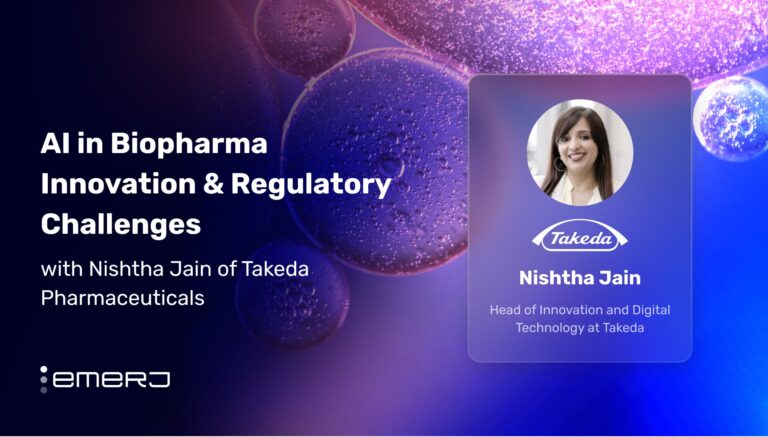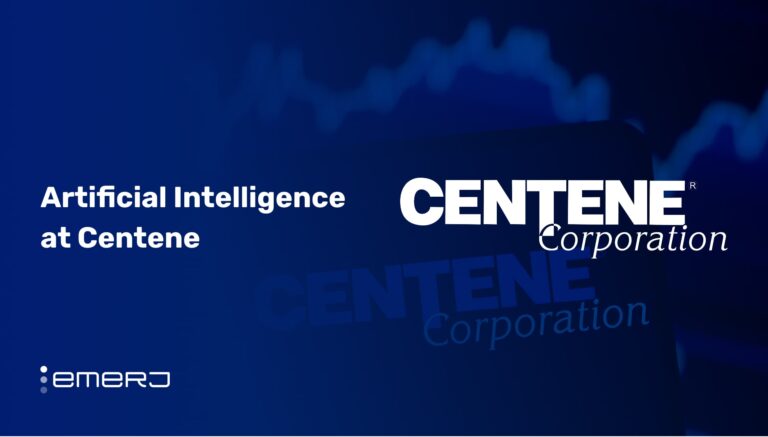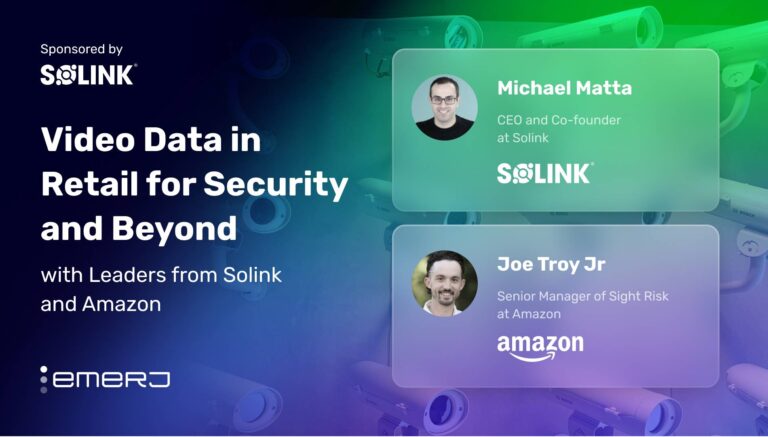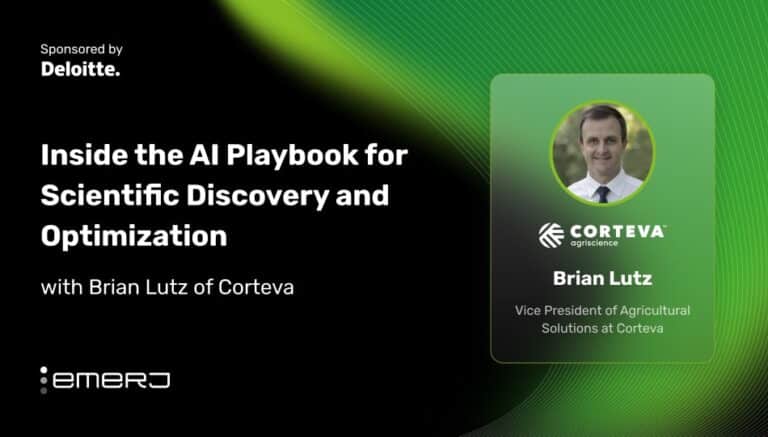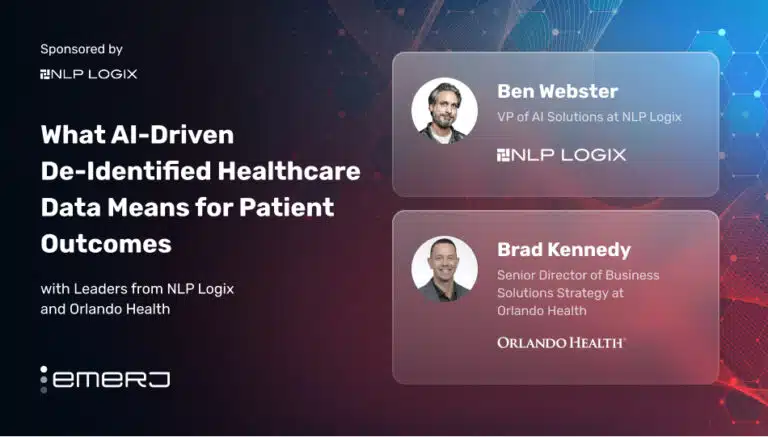This interview analysis is sponsored by MinIO and was written, edited, and published in alignment with our Emerj sponsored content guidelines. Learn more about our thought leadership and content creation services on our Emerj Media Services page.
Businesses are increasingly recognizing the importance of a strong hardware foundation for AI initiatives. Microsoft-commissioned research in partnership with Forrester and Ipsos shows that 41% of leaders struggle with infrastructure, while 39% need help with strategic planning. Additionally, 43% take a proactive approach to AI infrastructure, compared to 16% that remain reactive.
In embarking on their infrastructure journeys, enterprise leaders face challenges such as balancing innovation with security, managing costs, and scaling talent to support advanced systems. A report by General Assembly and Wakefield Research reveals that 70% of leaders believe their teams need more skills for secure generative AI use, with nearly 60% citing a shortage of tech talent to meet transformation goals.
In nearly a decade since the dawn of cloud computing, enterprises across industries find themselves engaging in complex hybrid cloud strategies to drive the growth of AI systems in ways that balance the benefits of cloud- versus various end-point storage systems specific to their organizational goals.
Emerj Artificial Intelligence Research recently sat down with experts from MinIO and several other life sciences and financial services firms – including SAP, Blue Cross Blue Shield, AstraZeneca, and Northwestern Mutual – to talk about the importance of aligning technology strategies, including cloud adoption, data management, and AI, with business goals while fostering a culture of innovation, security, and leadership to drive sustainable growth of new, extraordinary enterprise AI powers.
MinIO is an open-source, high-performance object storage system compatible with Amazon S3, designed for cloud-native environments and large-scale data infrastructure. Throughout the series, interviewed leaders stress the need for careful planning in selecting the right cloud solutions and storage options based on business needs, ensuring compliance and security, especially in regulated industries:
- Leveraging object storage for solving legacy infrastructure limitations
- Segregating transactional and background workloads to ensure system performance
- Designing architectures with clear business outcomes in mind
- Focus on high-quality, purpose-fit data High-Quality, Purpose-Fit Data
- The benefits of object storage for cost-effective and scalable data management
Emerj would like to thank our guests for sharing their knowledge and perspectives on cloud adoption, data management, AI integration, and leadership strategies. In the episode summaries below, enterprise leaders can find a breakdown of these insights.
Leveraging Object Storage for Solving Legacy Infrastructure Limitations
Episode: Essentials for AI Infrastructure and Object-Based Storage for Enterprises – with Anand Babu Periasamy of MinIO
Guest: Anand Babu Periasamy, Co-founder & CEO, MinIO
Expertise: Entrepreneurship, Cloud computing, Software
Brief Recognition: Anand Babu Periasamy is the CEO & Co-Founder at MinIO. Before founding MinIO, he worked with H2O.ai, where his last role was as a Board Member. He earned his Bachelor’s in Computer Science and Engineering from Annamalai University.
Anand emphasizes for Emerj’s executive podcast audience that object storage is foundational for modern infrastructure, drawing parallels with Amazon’s transformational approach to the industry. He explains that Amazon solved its scalability challenges by bypassing traditional storage vendors, creating AWS S3 — a simple, efficient object storage system that became the backbone of modern cloud infrastructure. This simplicity enabled innovation and scalability while shedding legacy complexities that hinder modernization.
He stresses that businesses must modernize their infrastructure, adopting AWS-like principles to remain competitive. Object storage, as the core of modern data centers, supports diverse data types (e.g., videos, code, AI models) through RESTful APIs, offering scalability and simplicity. While traditional systems are incompatible with this modern architecture, embracing object storage fosters innovation and cost efficiency.
Anand further emphasizes that object storage is not just a data repository; it serves as the heart of modern data centers. He notes that the legacy infrastructure many enterprises still rely on is a barrier to innovation and scalability. Object storage removes these obstacles by providing a straightforward way to store and manage data, making it an essential tool for businesses looking to scale efficiently:
“Object storage is the foundation for data storage in modern data centers. The [Amazon Web Services] cloud, as we know it today, was built around AWS S3. Object storage is simply a name given to a blob storage. Any piece of information, whether it’s a cat video or a machine learning model, is a ‘blob’ or an object. It’s a simple, scalable solution, and the best part of it is the simplicity. The worst part [of cloud technology], however, is that it’s incompatible with legacy infrastructure. If you carry that legacy infrastructure into the modern world over the cloud alone, you’re not going to innovate or scale.”
— Anand Babu Periasamy, Co-Founder & CEO, MinIO
Segregating Transactional and Background Workloads to Ensure System Performance
Episode: Driving AI Infrastructure in Compliance-Heavy Industries – with Shardul Vikram of SAP
Guest: Shardul Vikram, CTO and Head of Data & AI at SAP Industries and Customer Experience, SAP
Expertise: Software Development, Web Services, Web Security
Brief Recognition: Shardul Vikram is the CTO and Head of Data & AI at SAP Industries and Customer Experience, where he leads the product architecture for the Industries & CX line of business. He also serves as the Global Head of the Data & AI product unit, overseeing the development of SAP’s Customer Data Solutions (including CIAM, CDP, and ECPM), AI applications (CX AI Toolkit), SAP Recommerce, and SAP NFT Management. Previously, Shardul has held roles at Salesforce, SalesforceIQ, and Microsoft.
Shardul’s appearance on the podcast also highlights the foundational role of object storage in modern infrastructure and product strategies. He explains that even organizations that are not initially handling significant unstructured data will find value in adopting object storage. It becomes a cost-effective solution for offloading older transactional data from relational databases, facilitating disaster recovery by enabling databases to be repopulated when needed.
He emphasizes that object storage is integral to supporting analytics, AI, and data science tools, as these applications require scalable and high-performance access to vast amounts of data. By separating these workloads from transactional systems — whether relational or non-relational databases that power user-facing applications — businesses can maintain system performance and ensure critical operations are uninterrupted.
For example, real-time services like music streaming must prioritize immediate responsiveness, and separating asynchronous or background data processes from core systems ensures smooth user experiences:
“So let’s say an anonymous player comes in and says, ‘Oh, sorry, we had a disruption because we were running heavy workloads on the primary thing that serves this. And hence it was down.’ Typically, you see that there is a segregation between the assets that will serve my life and the customers that will serve what we call transactional use cases. Then you have a bunch of background processing and data analysis and training of the models that typically happens on top of object storage.”
—Shardul Vikram, CTO and Head of Data & AI at SAP Industries and Customer Experience
Designing Architectures with Clear Business Outcomes in Mind
Episode: Infrastructure Challenges in Life Sciences Through the Lens of Data – with Robert Wenier of AstraZeneca
Guest: Robert Wenier, Global Head of Cloud and Infrastructure, AstraZeneca
Expertise: Cloud Services and Technologies, Digital Disruption
Brief Recognition: Robert Wenier is the Global Head of Cloud and Infrastructure at AstraZeneca, where he drives the strategic transformation of the company’s technology infrastructure. He is responsible for developing and executing a comprehensive strategy to stabilize operations and enable rapid expansion of technical capacity. Robert’s prior experience includes roles at Northrop Grumman, Semper Fortis Solutions, and Welkin Associates. He holds a Master’s Degree in Business Administration from George Mason University.
Robert highlights the challenges for pharmaceutical IT leaders in balancing innovation with scalability, security, and cost. Scientists often adopt cutting-edge tools that may not scale, adding complexity for IT teams.
He tells Emerj Senior Editor Matthew DeMello that the industry is split into two domains:
- Discovery, driven by AI and innovation
- Manufacturing, which is reliant on older systems.
This disparity adds to the challenges of technology optimization.
He shares with Emerj’s podcast audience AstraZeneca’s early adoption of AI, starting with data science and evolving through machine learning and onto generative AI today. He credits tools like AWS SageMaker for democratizing AI model building, making it accessible even to non-experts, which fueled a surge in cloud adoption. However, managing the resulting enthusiasm and ensuring sustainable integration remains a challenge. Robert emphasizes the importance of staying prepared for future technological leaps, such as generative AI, and maintaining balance amidst constant innovation.
He highlights rapid advancements in edge technology, which bring cloud-like capabilities to edge devices. For storage, he also cites object storage as key for unstructured data, making it essential for AI and generative AI models, as it allows for raw data to be organized without complex ontologies. He emphasizes designing architectures for specific business outcomes rather than adopting new technologies without purpose:
“Organizations must focus on designing architectures that are purpose-driven and aligned with specific business outcomes. Simply adopting new technologies for their own sake can lead to wasted investments and challenges in measuring ROI. It’s about working backward from the desired outcome to understand how cloud storage or any technology helps achieve those goals, ensuring buy-in and long-term success.”
—Robert Wenier, Global Head of Cloud and Infrastructure at AstraZeneca
Focusing on High-Quality, Purpose-Fit Data
Episode: Long-Term ROI on GenAI in Healthcare – with Ylan Kazi of Blue Cross Blue Shield
Guest: Ylan Kazi, Chief Data and AI officer, Blue Cross Blue Shield
Expertise: AI Strategy, Data Strategy, Machine Learning
Brief Recognition: Ylan Kazi is the Chief Data and AI Officer at Blue Cross Blue Shield of North Dakota, where he developed the company’s first enterprise-wide data strategy and implemented AI initiatives that delivered significant cost savings and operational efficiencies. Ylan’s previous experience includes roles at Bridgewater Partners, Children’s Mercy Kansas City, and UnitedHealth Group. He holds a Master’s Degree in Healthcare Administration from the University of Minnesota.
Ylan’s podcast appearance emphasizes that the top priority for healthcare and financial services leaders is keeping member or patient data secure and private, guiding decisions on data storage. He highlights that hybrid cloud environments can meet regulatory requirements like HIPAA, provided organizations have proper agreements with stakeholders. Cloud technology has evolved to support secure data storage in regulated industries, but successful implementation requires a cross-functional team to address security, compliance, and ethical considerations.
He stresses the importance of aligning hybrid storage strategy with tangible, individual business goals:
“That would be an example of a use case where you’re very focused on an outcome, and then you can work backward and figure out: How does cloud storage help your organization achieve those outcomes? And what are some of the building blocks that you have to put into place?
That’s just a very important heuristic to be able to use, because if you’re just putting things in the cloud for the sake of putting things in the cloud, and there’s no overarching outcome or purpose to it? Then it’s going to be very difficult, first off, to get buy-in. And then secondly, if you’re making large-scale investments, it’s going to be very challenging to measure that and ROI from it.
– Ylan Kazi, Chief Data and AI officer, Blue Cross Blue Shield
He also believes that object storage will remain relatively stable in the near future, with only some optimizations for specific data types. He advises business leaders to focus on particular use cases aligned with overall business strategy, as the journey of adopting cloud and storage solutions is ongoing.
He also emphasizes that while having more data can be beneficial, the focus should shift towards acquiring higher quality data that is fit for purpose. Organizations will need to rethink their data strategy and be more targeted in developing the correct data, whether internal or external.
The Benefits of Object Storage for Cost-Effective and Scalable Data Management
Episode: Northwestern Mutual’s Cloud Adoption Journey – with Ahmed Azam of Northwestern Mutual
Guest: Ahmed Azam, Vice President-Infrastructure and Cloud Services, Northwestern Mutual
Expertise: Cloud Technologies, Software Engineering, Development Operations
Brief Recognition: Ahmed Azam is the Vice President of Infrastructure and Cloud Services at Northwestern Mutual. Starting as an intern, he has been with the company for over 12 years, contributing to its growth and technological advancements. Ahmed holds a Master’s degree in Business Administration from Marquette University.
Ahmed explains that Northwestern Mutual’s approach to cloud adoption is focused on a business-driven cloud journey rather than simply lifting and shifting workloads to the cloud. He tells the Emerj podcast audience that Northwestern prioritizes understanding the business needs for scalability, security, and rapid change and selects cloud solutions based on those needs. He further underscores how his team at Northwestern believes the “principles of the cloud” (i.e., automation and modern ways of working) should be applied across all environments, whether it’s public cloud, private cloud, or on-premises.
The key, Ahmed emphasizes, is to place workloads in the most appropriate location based on business requirements rather than just migrating applications to the public cloud without considering the specific needs. He then explains that their company uses various types of storage – including block, file, object, and relational databases. However, their primary focus is on the data strategy itself, which determines the most appropriate storage solution:
“As an example, object storage is becoming increasingly popular today in the public cloud for many good reasons. There are a lot of cost benefits to object storage, such as more robust metadata management. This whole kind of battle that companies are facing with unstructured data becomes much more solvable if you leverage object storage properly.”
– Ahmed Azam, Vice President-Infrastructure and Cloud Services, Northwestern Mutual
He views good data management as essential for their strategy, highlighting the need to maintain appropriate data governance, security, and compliance in order to uphold client trust. Such careful attention to data is seen as a key driver of the company’s success and a critical factor in maintaining strong relationships with clients and advisors.








